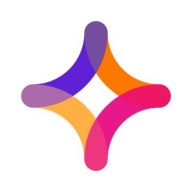

Jitterbit Harmony and Spring Cloud Data Flow are prominent solutions in the integration and data flow market. Jitterbit Harmony gains an advantage through competitive pricing and support satisfaction, whereas Spring Cloud Data Flow stands out for its advanced features, appealing to those prioritizing functionality.
Features: Jitterbit Harmony supports complex integrations with robust API management, pre-built templates, and an intuitive platform. Spring Cloud Data Flow excels in data pipeline orchestration, real-time analytics, and extensive data transformation capabilities.
Room for Improvement: Jitterbit Harmony could enhance scalability and expand its integration capabilities with additional connectors. Improving customizability of data transformations and advancing its analytics dashboard could benefit users. Spring Cloud Data Flow might reduce initial setup complexity, streamline the configuration process, and enhance user interface simplicity to support less technical users.
Ease of Deployment and Customer Service: Jitterbit Harmony offers a cloud-based model that simplifies deployment along with comprehensive customer service ensuring smooth operations. Spring Cloud Data Flow, requiring more configuration expertise, provides the ability to scale environments and utilize microservices architecture, granting significant control over deployment.
Pricing and ROI: Jitterbit Harmony delivers cost efficiency with competitive setup fees and a user-friendly platform for quick ROI. Spring Cloud Data Flow requires a higher initial investment, but its feature-rich offerings promise long-term returns for organizations tackling complex requirements.


Jitterbit Harmony is a comprehensive platform for data integration and API management, enabling seamless synchronization and automation across cloud-based and on-premises applications.
Users leverage Jitterbit Harmony to integrate systems like ERP and CRM applications, simplifying complex data workflows and enhancing automation. It supports efficient data migration and ensures smooth connectivity, handling diverse integration needs and helping streamline business processes. Users emphasize its drag-and-drop functionality and extensive templates, which contribute to its robust performance. However, improvements are needed in data mapping, error message clarity, and documentation, especially when dealing with large data volumes.
What are the key features of Jitterbit Harmony?Companies across retail, manufacturing, healthcare, and finance sectors use Jitterbit Harmony to integrate critical applications and automate workflows. In retail, it connects inventory systems with sales platforms, reducing manual effort. Manufacturers sync their ERP systems with supply chain software, optimizing operations. Healthcare organizations integrate patient management systems with insurance databases, streamlining patient care. Financial institutions use it to connect accounting software with banking systems, ensuring real-time financial data exchange.
Spring Cloud Data Flow is a toolkit for building data integration and real-time data processing pipelines.
Pipelines consist of Spring Boot apps, built using the Spring Cloud Stream or Spring Cloud Task microservice frameworks. This makes Spring Cloud Data Flow suitable for a range of data processing use cases, from import/export to event streaming and predictive analytics. Use Spring Cloud Data Flow to connect your Enterprise to the Internet of Anything—mobile devices, sensors, wearables, automobiles, and more.
We monitor all Data Integration reviews to prevent fraudulent reviews and keep review quality high. We do not post reviews by company employees or direct competitors. We validate each review for authenticity via cross-reference with LinkedIn, and personal follow-up with the reviewer when necessary.